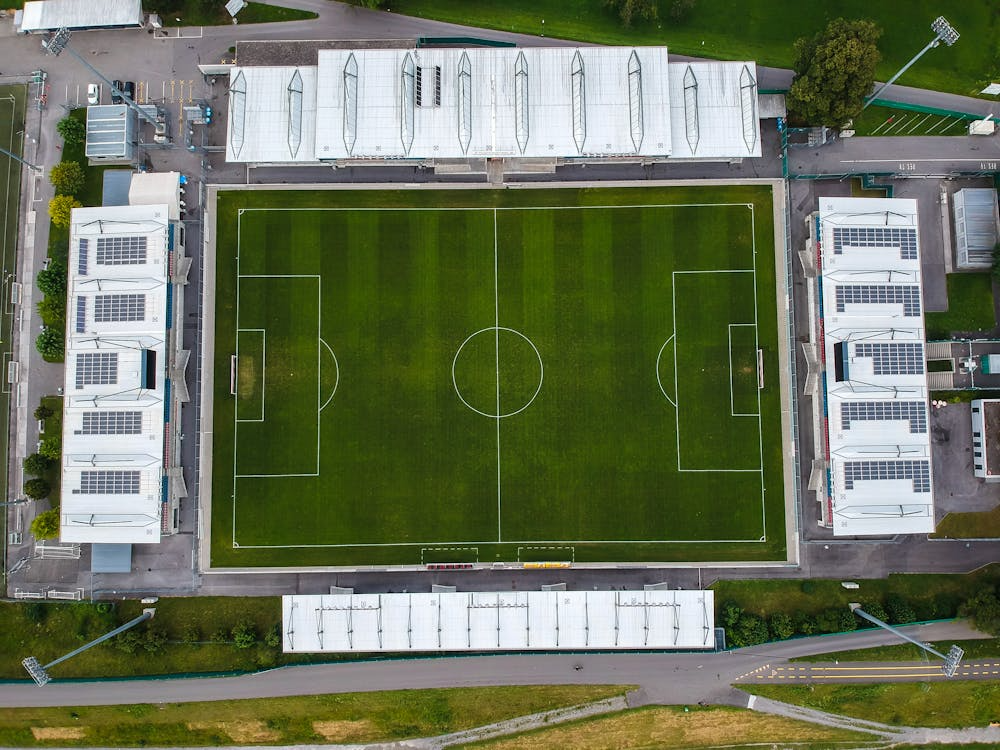From Chattogram’s coastal arenas to up-country cricket grounds, Bangladeshi venues are trading steep utility bills for solar rooftops, rain-harvest tanks, and recycled seating. The transition trims costs, clears diesel smoke, and keeps pace with global climate goals even on modest budgets.
Why Sustainability Matters to Venue Managers
Evening matches at smaller venues often run on diesel due to weak grid power. These generators rattle outside stadium gates and release thick fumes during night fixtures. In select urban stadiums, solar panels with battery backups have started to support basic lighting systems, helping reduce generator runtime and fuel expenses. Groundskeepers note clear benefits: lower noise levels during evening matches, more stable light output when battery support is used, and better air quality around the field. Some ticket sellers also observe that spectators stay longer after matches when the air feels less smoky.
Tech-Forward Fan Services
Most stadiums in Bangladesh still run with limited digital tools, but larger venues now use e-tickets to cut paper and speed up entry. Fans follow match stats and schedules on their phones instead of printed programs. For real-time cricket updates, some opt for 1x bat download to get quick access to scores, team lineups and match alerts without needing extra devices. Wi-Fi and refill stations are still rare, but mobile habits are making the fan experience cleaner and more connected.
Solar Lighting Takes Centre Stage
LED lamps use less power and last longer. Some Dhaka and Chattogram venues now run rooftop panels linked to batteries. They cover basic lighting and scoreboards when the grid cuts out. Staff check output on phones and plan around cloud cover. Where installed, fuel costs drop and night games run without fuss.
Water and Turf Innovations
Some stadiums in Dhaka collect rainwater for dry-season use. A few pitches now test hybrid turf with natural grass and local backing to cut wear. Crushed brick and sand replace rubber fill on small fields. The surface runs cooler and holds up better in heat.
Waste and Seating Upgrades
Recycling bins are present at a few large stadiums, mainly in Dhaka and Chattogram, but not by every gate. Full separation is rare. Some vendors use paper trays, but single-use items stay common. Old bleachers are reused on-site, not sent to schools.

Low-cost environmental wins:
- Sensor taps in newer washrooms reduce water use
- Corridor lights with motion sensors are being tested in select zones
- Grass clippings are composted at a few venues with nearby green space
Each of these ideas costs little to maintain but is still limited to a few stadiums.
Community Engagement Grows
Educational programs tied to stadium sustainability remain limited. Schools may visit for matches, but solar panel tours or energy lessons are not common. Scoreboards don’t display solar output or environmental stats. However, a few local tailors repurpose old banners or team flags into cloth bags or covers, sold at small fan stalls or local shops. These crafts show growing interest in circular use, even without formal campaigns.
Overcoming Obstacles
Upfront costs for solar panels stop many small clubs from adopting them. Some NGO and donor programs offer partial grants or low-interest loans, but access is uneven and slow. In coastal areas, maintenance teams use basic wooden or metal covers to shield panels before storms. A few minor venues now install steel-framed roofs with solar strips to shade fans while powering lights or ceiling fans. These setups are simple but effective for limited use.
Economic Ripple Effects
Technical colleges in Dhaka and Chattogram now offer short solar training courses. Graduates often find work maintaining rooftop arrays in cities or rural mini-grids. Some turf producers near Gazipur test new soil blends with natural fibers, but adoption remains low. A few stadium vendors are expanding plant-based food options, buying lentils, rice, and produce from local farms. Eco themes are emerging slowly, shaped by local budgets and seasonal demand.
The Road Ahead
Some architects now explore modular seating made from bamboo and waterproof board, built to handle rain and heat. A few grounds are testing solar lights at entry points to cut grid use during evening games. Online training videos in Bangla help junior staff clean panels, reset inverters, and check turf moisture with basic tools. These small steps keep systems running past the grant phase. Kinetic floor tiles are not in use but remain under discussion for future pilots.
Conclusion
Bangladeshi stadiums show that smart eco design can trim budgets, keep matches on schedule, and educate fans in a single renovation cycle. From rooftop panels to rain-fed turf, every upgrade proves sport and sustainability share the same scoreboard, and victories feel larger when the planet wins too.



